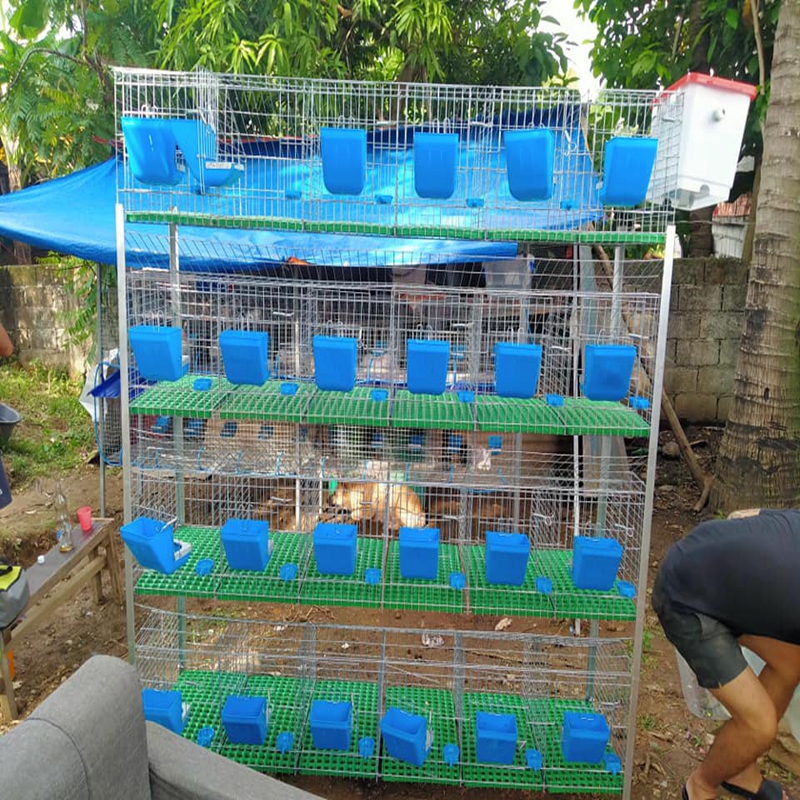pellet machine for chicken feed
Dec . 01, 2024 22:11 Back to list
pellet machine for chicken feed
The Importance of Pellet Machines for Chicken Feed Production
In the poultry industry, the quality of feed plays a vital role in the health, growth, and productivity of chickens. As farmers continually seek ways to improve feed efficiency, the use of pellet machines for chicken feed production has gained significant attention. This article explores the benefits, working principles, and considerations for using pellet machines in the production of chicken feed.
What Are Pellet Machines?
Pellet machines are specialized equipment designed to compress feed ingredients into small, uniform pellets. The process involves grinding the raw materials into a fine powder, mixing them to achieve the desired nutritional balance, and then forcing the mixture through a mold to create pellets. After passing through the pellet mill, these pellets are cooled and often coated with fat or oil to enhance palatability and energy content.
Benefits of Pelletized Chicken Feed
1. Improved Nutritional Value Pelletizing chicken feed can enhance its nutritional value. Processing the feed through high pressure and heat can help to break down anti-nutritional factors, making nutrients more bioavailable and easier for chickens to digest. This ensures that the birds receive an optimal balance of proteins, vitamins, and minerals.
2. Higher Feed Efficiency Animals tend to waste less food when fed pellets compared to mash. The uniform size and shape of pellets lead to reduced feed spillage and better consumption rates, ensuring that chickens receive an adequate amount of nutrition without excess waste.
3. Enhanced Growth Rates Research has shown that pelletized feed can lead to faster weight gain in chickens. The consistency of the pellets can promote better feed intake and conversion rates, resulting in healthier birds with improved growth metrics, which is crucial for commercial poultry operations.
4. Reduced Mediation Costs When chickens are fed pellets, they often require fewer medical interventions due to better overall health and uniformity in growth. This can lead to decreased veterinary costs, contributing positively to the bottom line of poultry farms.
5. Convenience and Storage Pelletized feeds are easier to handle, transport, and store. They tend to take up less space compared to bulk feed and are less prone to spoilage, thereby extending their shelf life. Farmers can stockpile pellets without the worry of decay or pest infestations commonly associated with raw feed ingredients.
Working Principle of Pellet Machines
pellet machine for chicken feed

Pellet machines operate on a straightforward yet effective principle. They consist of several key components a feeder, a conditioning chamber, a die, and a die roller. The raw feed materials are first fed into the pellet mill and then conveyed to the conditioning chamber where steam is added. The combination of heat and moisture makes the feed pliable, preparing it for pellet formation.
As the conditioned feed is forced into the die through the roller, it is compressed into pellet shapes. The die’s configuration determines the size and shape of the final product, which can be tailored based on the specific needs of the poultry. Once the feed exits the die, it is often cut into different lengths to promote uniformity before being cooled and packaged.
Considerations for Using Pellet Machines
While the benefits of pellet machines are substantial, potential users should consider several factors before investing in this technology
1. Cost of Investment Pellet machines can represent a significant upfront investment. Farmers should evaluate their production scale to determine if the long-term benefits outweigh the initial costs.
2. Operational Expertise The successful operation of pellet machines requires a certain level of technical knowledge. Farmers may need training to ensure optimal operation and maintenance.
3. Quality of Ingredients The quality and composition of raw feed materials can influence the effectiveness of the pellet production process. Using high-quality ingredients is essential for producing nutritious, high-quality pellets.
4. Energy Consumption Pellet production can be energy-intensive. Farmers should consider energy costs and the potential need for a reliable power source when planning their feed production operations.
Conclusion
Pellet machines for chicken feed production offer numerous advantages that can significantly enhance the efficiency and productivity of poultry farming. By optimizing the nutritional content of feed, improving feed efficiency, and reducing waste, pelletized feed plays a crucial role in modern poultry management. As farmers look to enhance their operations, integrating pellet machines can provide a competitive edge, ensuring healthier chickens and more profitable business outcomes.
-
Hot Sale 24 & 18 Door Rabbit Cages - Premium Breeding Solutions
NewsJul.25,2025
-
Automatic Feeding Line System Pan Feeder Nipple Drinker - Anping County Yize Metal Products Co., Ltd.
NewsJul.21,2025
-
Automatic Feeding Line System Pan Feeder Nipple Drinker - Anping County Yize Metal Products Co., Ltd.
NewsJul.21,2025
-
Automatic Feeding Line System - Anping Yize | Precision & Nipple
NewsJul.21,2025
-
Automatic Feeding Line System - Anping Yize | Precision & Nipple
NewsJul.21,2025
-
Automatic Feeding Line System-Anping County Yize Metal Products Co., Ltd.|Efficient Feed Distribution&Customized Animal Farming Solutions
NewsJul.21,2025






